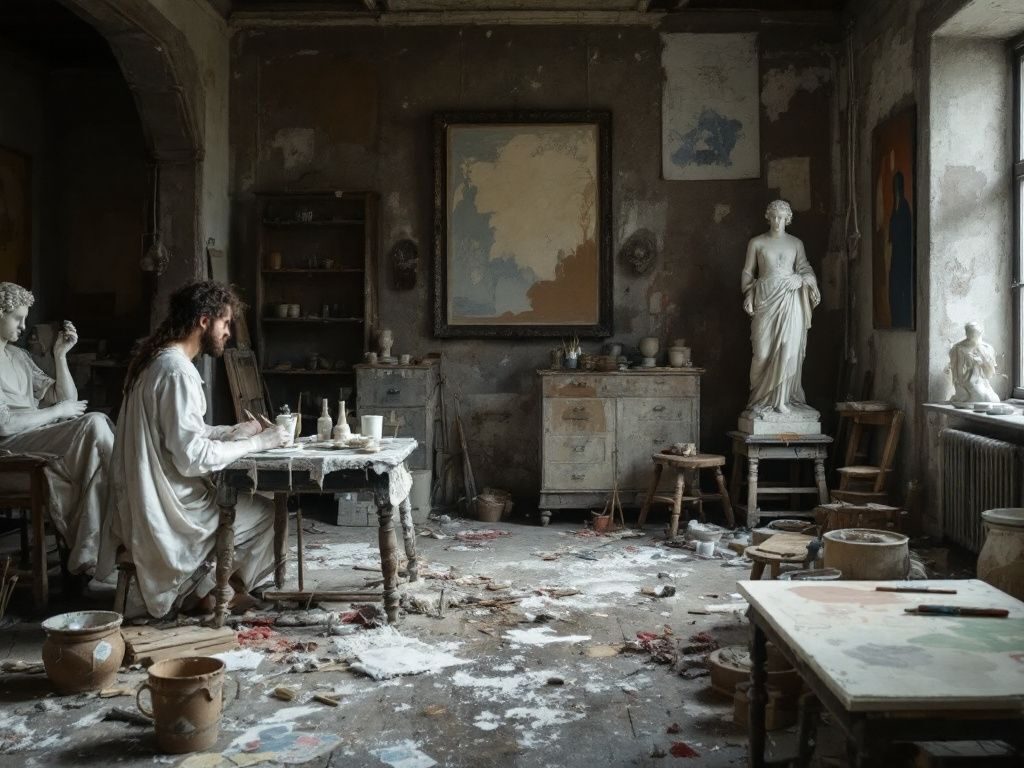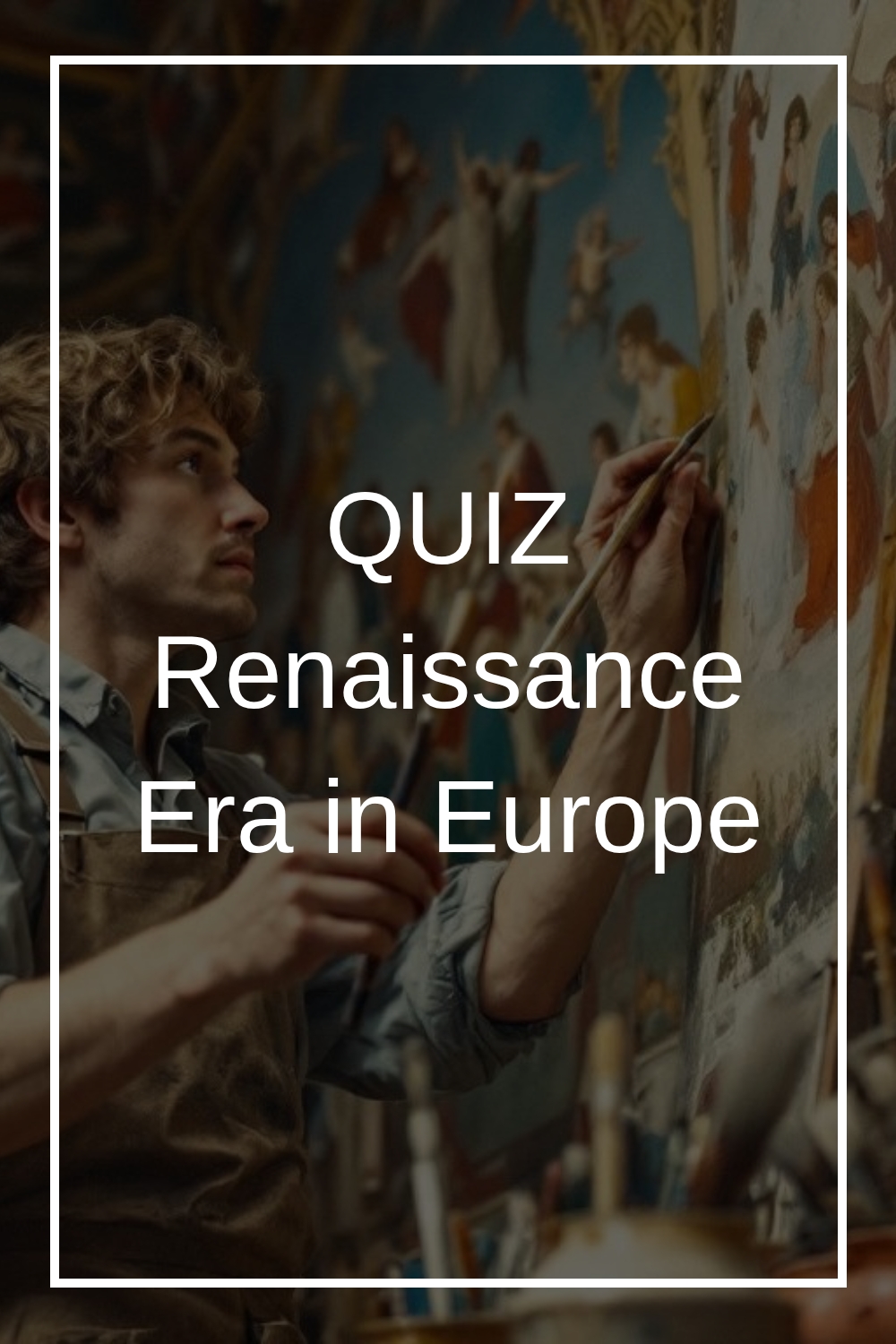Latin and Greek Phases of Renaissance Humanism
- Renaissance Humanism began in 14th century during the beginning of the Renaissance Era in Europe in Italy. There was a shifting focus to ancient Roman and Greek ideals and classical antiquity texts to gain forgotten wisdom.
- This movement aimed to improve society and human perception by studying classical works, forming the basis for much of today’s Western culture.
- Petrarch, known as the “Father of Humanism,” was vital in reviving Latin literature, emphasizing moral philosophy and ethics from ancient writers like Cicero and Virgil.
- Renaissance thinkers connected the ancient Greek world with their own by reformatting significant Greek texts into Latin.
Greek Scholarship
- Thinkers like Giovanni Pico della Mirandola championed a human-centered universe, prioritizing individual achievement over shared destiny.
- The Renaissance Era in Europe fostered an intense desire for learning and a keen appreciation for human potential and historical achievements, driving advancement by using historical insights for a better future.
Impact on Arts and Sciences
- The shift in humanism during the Renaissance Era in Europe significantly influenced arts and sciences. This led artists to explore new techniques focusing on individualism and realism.
- Artists adopted linear perspective, transforming painting to create depth, as seen in works by Masaccio and Sandro Botticelli.
- Sculpture flourished with masters like Donatello, who crafted lifelike figures expressing human emotion.
- Scientific breakthroughs occurred during the Renaissance Era in Europe, with Nicolaus Copernicus challenging old beliefs with his heliocentric theory, altering humanity’s view of its place in the cosmos.
- Medical knowledge advanced through observation and experimentation, laying the groundwork for future discoveries.
- Johannes Gutenberg’s invention of the printing press revolutionized information access, facilitating the spread of Renaissance ideas across Europe.
- Art and science were crucial in shaping modernity during this period, inspiring minds that championed classical learning and innovation.
Artistic Developments in the Renaissance Era in Europe
- Renaissance artists experimented with new styles, with Florence becoming a hub for creativity and revolutionary painting and sculpture techniques.
Emergence of Florence as a Cultural Hub
- Florence became a critical cultural center during the Renaissance Era in Europe, known for artistic innovation and humanism.
- The Medici family, through their patronage, notably supported artists like Michelangelo Buonarroti and Filippo Brunelleschi, fostering creativity in painting and sculpture.
- Scholars like Coluccio Salutati enriched Florence’s environment by reviving Classical Greek and Roman ideas, influencing art, politics, and society.
- Florence attracted talent from all over Europe, cementing its status as a learning and cultural center.
Innovations in Painting and Sculpture
- The Renaissance Era in Europe saw significant innovations in painting and sculpture, with artists like Leonardo da Vinci and Michelangelo pioneering new techniques.
- Linear perspective was introduced, creating depth on flat surfaces, exemplified by Da Vinci’s “Mona Lisa.”
- Sculptors also made great advances, with Michelangelo’s “David” showcasing human beauty and emotion, carved from a single block of marble.
- Italian city-states, particularly Florence, fostered artistic advancements, making them cultural hubs.
- Artists experimented with light and shadow, engaging audiences more deeply and setting the stage for future artistic movements in Europe.
Intellectual Movements and Their Influences
- Renaissance humanism spurred learning across Europe, leading to the opening of libraries and discussions of ancient texts, inspiring new ideas in science and exploration.
Renaissance Humanism and Libraries
- Renaissance humanism profoundly shaped libraries by focusing on the recovery and study of classical texts deemed vital for personal and civic growth.
- Humanists established libraries across Europe to preserve valuable manuscripts, turning them into centers for learning and innovation.
- Scholars like Desiderius Erasmus utilized these libraries to disseminate ideas, and the promotion of studia humanitatis emphasized literature, history, and moral philosophy.
- This commitment to education drove advancements in art, science, and political thought throughout the Renaissance Era in Europe.
Science and Exploration Advancements During the Renaissance Era in Europe
- The Renaissance led to major advancements in science and exploration, with figures like Galileo Galilei challenging existing beliefs through observation and experimentation, which paved the way for the Scientific Revolution.
- Explorers sought new trade routes and discoveries, significantly improving mapmaking during this period and aiding European expansion.
- The emphasis on humanism fostered curiosity about the world, driving further exploration.
- Scientific developments and cultural progress intertwined, leading to significant transformations in art and knowledge across Europe.
Social and Political Structures
- Italian city-states, such as Florence, were crucial in shaping Renaissance political life, as powerful families sponsored art and ideas that transformed society.
The Role of City-States in Italy
- City-states were vital political and economic centers in Italy during the Renaissance, with Florence, Venice, and Milan being significant examples that influenced art, culture, and governance.
- These cities were trade and commerce hubs, and their wealth allowed patrons to support artists like Botticelli and Andrea del Verrocchio.
- The Black Death significantly impacted these regions by reducing the population, allowing surviving workers to demand better wages and working conditions, altering social structures.
- City-states adapted to these changes, fostering an environment conducive to creative expression and innovation.
- Civic humanism flourished, with thinkers like Lorenzo Valla emphasizing classical education, and humanist scholars spreading new ideas through libraries, leading to advancements in science, literature, politics, and art.
Influence of the Black Death on Societal Changes
- The Black Death, which devastated Europe from 1347 to 1351, had a profound impact on societal changes by causing millions of deaths and drastically altering lives.
- The high death rates led to labor scarcity, empowering survivors to negotiate better wages and working conditions.
- Population decline weakened feudalism, granting peasants more power and encouraging migration to cities that offered better prospects.
- These shifts contributed to the rise of prominent city-states like Florence during the Renaissance.
- A new emphasis on individual rights emerged alongside a growing interest in Renaissance humanism, fostering creative expression in arts and literature.
Renaissance Music and Literature
- Music and literature underwent significant changes during the European Renaissance, with composers exploring new styles and writers producing influential works that profoundly shaped European culture.
Evolution of Music Styles During the Renaissance
- Renaissance music saw a significant shift towards harmony and melody, moving away from medieval styles, and secular music gained popularity alongside sacred music.
- The use of instruments expanded, creating new sounds and textures in compositions.
- Figures like Josquin des Prez contributed complex polyphony, showcasing individual musical creativity.
- Printing technology advancements helped disseminate musical ideas across Europe.
- The emergence of choral settings emphasized beauty and emotional expression, laying the groundwork for future musical movements and highlighting the artistic rebirth of the European Renaissance.
Key Literary Works and Their Impact
- Renaissance literature, from the 14th to 17th centuries, featured significant contributions from writers like Niccolò Machiavelli and Dante Alighieri.
- Machiavelli’s “The Prince” advocated for leaders prioritizing power over morality, shifting political thought and sparking debates on governance.
- Dante’s “Divine Comedy” explored themes of humanity and spirituality, capturing readers’ imaginations while reflecting societal values and demonstrating the influence of classical texts on Renaissance authors.
- Literary advancements, guided by new ideas of individuality and human experience, inspired other art forms and promoted a renaissance in poetry.
- These key literary works created a lasting legacy, shaping future generations and establishing a strong foundation for modern literature across Europe.
Geographic and Navigational Discoveries
- During the Renaissance, explorers made significant advancements in mapmaking and navigation, which facilitated European expansion and connection with new lands.
Contributions to Mapmaking and Navigation
- The Renaissance marked substantial progress in mapmaking and navigation, with cartographers using classical knowledge to create more accurate maps based on Greek and Roman scholarship.
- Technological advancements, including the astrolabe and magnetic compass, made long sea voyages possible, leading to new trade routes and discoveries.
- These innovations allowed Europe to expand its reach across continents, fundamentally changing global dynamics.
Impact on European Expansion in the Renaissance Era in Europe
- Renaissance thinkers’ curiosity fueled European exploration and expansion to understand different cultures beyond familiar territories.
- Italian city-states were crucial in this movement due to their focus on trade and cultural exchange.
- Explorers like Christopher Columbus, driven by Renaissance ideals, embarked on voyages that led to discoveries and opened new lands for exploration and exploitation.
- The printing press disseminated knowledge about these expeditions, stimulating interest in colonization and commerce.
- This expansion considerably transformed European societies, bringing wealth from new resources and markets, and fostering a vibrant culture that celebrated learning and innovation, influencing art and literature globally.


 Cart is empty
Cart is empty 


